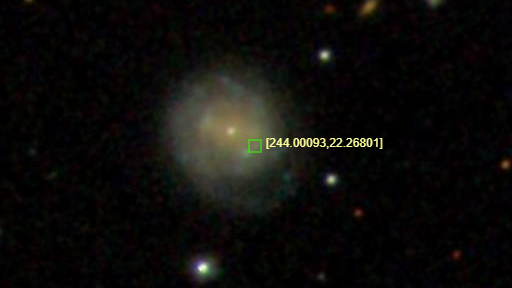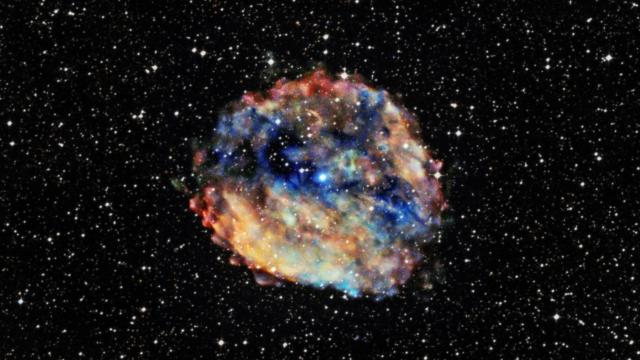Two years ago, evidence of a big cosmic burst reached Earth in the form of bright blue flash. Nicknamed “the Cow,” it looked like a supernova — a star’s dramatic death — but it happened even quicker than known star deaths. Now, a team of astronomers believe they’ve narrowed down the list of cosmic suspects to just two: the X-ray radiation was either emitted by a small black hole or a neutron star. The team’s results are published today in Nature Astronomy.
“The amount of energy was orders of magnitude more than the typical core collapse supernova,” said Dheeraj Pasham, an astronomer at MIT and the lead author of the new paper, in an MIT release. “The question was, what could produce this additional source of energy?”
First, the team simulated noise from the object about 50,000 times, Pasham told Gizmodo in an email. They determined that there was only about a 0.02% chance the signal they were seeing was a red herring. The pulses came from an object known as AT2018cow — the Cow for short — located 200 million light-years from Earth. That moniker was just a happenstance of astronomical naming; there’s a similar object called the Koala. Both objects are fast blue optical transients (FBOT), a rare class of objects known for looking like supernovae while being more fleeting and 100 times brighter.
While the Cow’s identity remains unknown, the research team studying the object figured it was either a black hole or a neutron star, based on the frequency of its X-ray pulses, which occurred every 4.4 milliseconds over a 60-day period.

The frequency of the pulses gave the researchers a sense of its size — no more than about 998 km across, with a mass of no more than 850 suns. But since the Sun’s diameter is around 1,392,083 km across, it makes the Cow extremely compact.
Black holes and neutron stars are the densest known objects in the universe, and both occur at the end of the stellar life cycle. Black holes are those enigmatic objects with gravitational fields so intense that not even light can escape them, while neutron stars are dead stars with such intense gravity that electrons collapse in on protons, effectively making a star completely composed of neutrons.
Pasham told Gizmodo that the object was rotating around 224 times per second. (The Cow is a pulsar, meaning that it flashes a signal periodically that can only be seen on Earth when it is pointed in our direction. Since the Cow’s X-ray burst frequency was 224Hz, the researchers know it was rotating about that quickly).
If the researchers were able to determine exactly how dizzyingly fast the object was rotating, they could establish what it is for certain. “I think the Cow is just the beginning of what is to come,” Pasham said. “More such objects would provide a new window into these extreme explosions.”
Whatever the object is, astronomers were able to see its birth in 2018. As they pore over more data from the Cow and objects like it, their identities may become less of a mystery.
More: Astrophysicists Detect Black Holes and Neutron Stars Merging, This Time for Certain
Editor’s Note: Release dates within this article are based in the U.S., but will be updated with local Australian dates as soon as we know more.
